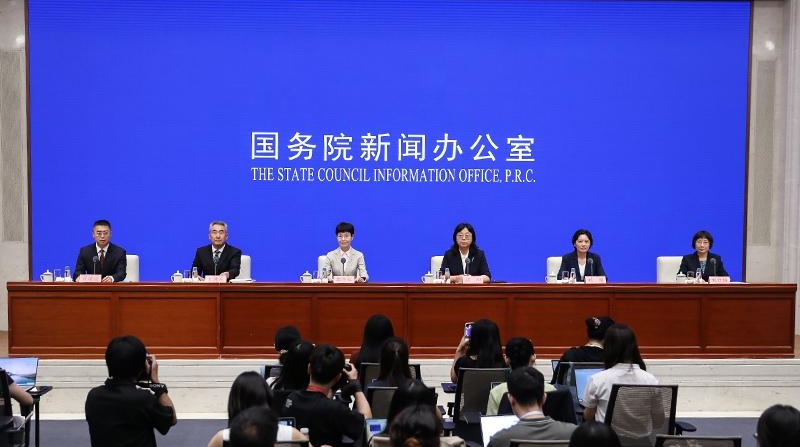Phoenix TV:
We noticed that this child care subsidy program sets the amount at 3,600 yuan per child per year. Could you explain how this standard was determined and what considerations were behind it? What are the expected goals you hope to achieve? Thank you.
Guo Yanhong:
Thank you for your questions. I will answer them. At present, the national child care subsidy standard is set at 3,600 yuan per child per year until the child reaches 3 years old. The subsidy standard was set based on factors such as our country's current development stage, the cost of raising children for residents, fiscal capacity and international practices. The standard follows the principle of doing everything within our means.
The child care subsidy system is an important policy for meeting people's basic living needs, affecting millions of Chinese families. Internationally, many countries have adopted similar policies to support childbearing. Within China, some localities have explored and implemented different forms of child care subsidies tailored to their local population and socioeconomic conditions, earning widespread public support. Based on international and domestic implementation experiences, China's implementation of the child care subsidy system is expected to produce three anticipated effects:
First, it will help reduce the burden of child-rearing on families. The child care subsidy system, as an economic policy supporting childbirth, can directly increase people's cash income through targeted distribution of fiscal funds. The child care subsidy will benefit tens of millions of families every year, providing basic support for family child-rearing, improving child care conditions, alleviating the economic pressure of raising children to a certain extent, and giving people better access to child care.
Second, it will create a childbirth-friendly social atmosphere. The child care subsidy is an incentive policy that strengthens support for childbirth and promotes a birth-friendly environment, setting a clear policy direction. Implementing the child care subsidy system will also work in coordination with related policies on child care services, education, employment, taxation and housing. This will continuously improve the overall childbirth policy framework, creating a more integrated and effective system and promoting the development of a childbirth-friendly society.
Third, it better ensures and improves people's livelihoods. The child care subsidy program is a public welfare policy that provides universal services, addresses basic needs and serves as a safety net for those most in need. With broad coverage and stable distribution, it represents an important way to invest in people. Its implementation further strengthens basic livelihood security, supports family development and closely aligns high-quality population development with high-quality living standards. This targeted approach delivers far-reaching benefits for the public. Additionally, it helps promote a virtuous cycle of livelihood improvement and economic development, adding new momentum to sustained healthy economic growth.
Given that this is a new system, we will conduct continuous in-depth research on the child care subsidy program, seek extensive public consultation, and monitor and evaluate its effectiveness to ensure continuous optimization. Thank you.


 Share:
Share: 




 京公网安备 11010802027341号
京公网安备 11010802027341号